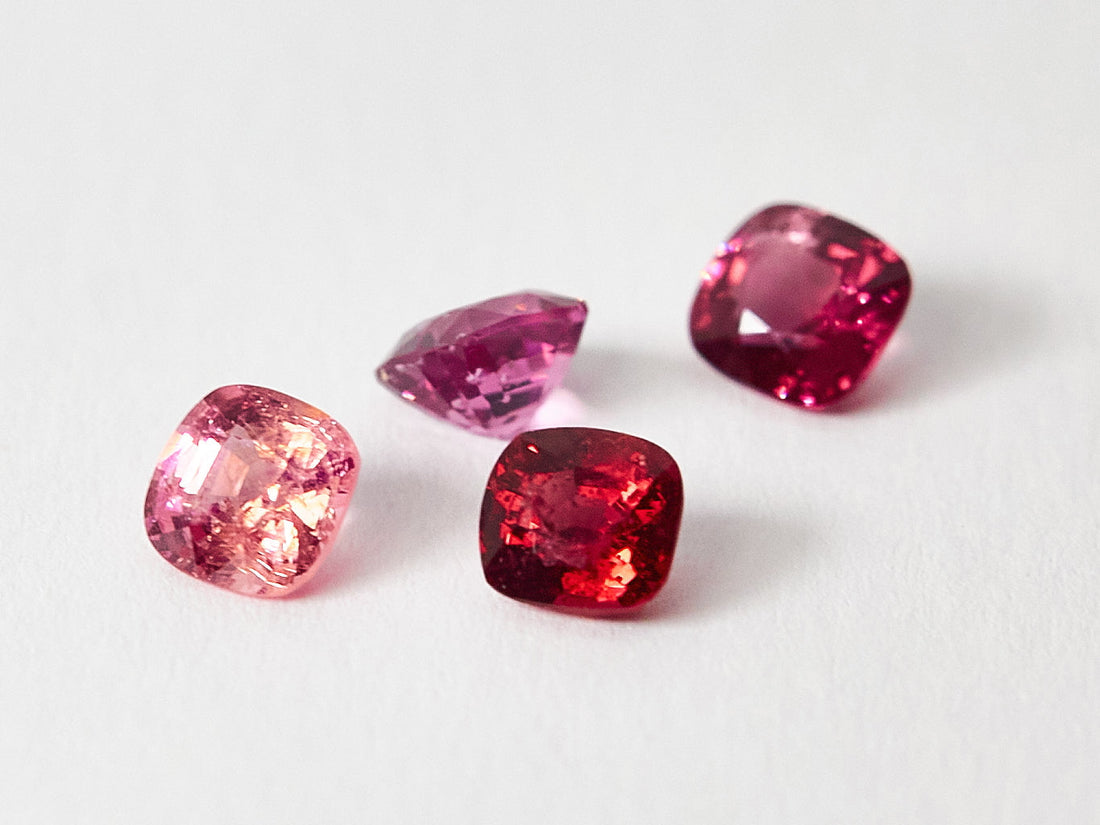
Spinel: The Underrated Gem That's Gaining Recognition
Share
As a gem dealer and enthusiast, I can confidently say that spinel is one of my favorite gemstones. It has everything one could ask for in a gem—except, perhaps, for an affordable price, as its value continues to rise steadily. With a hardness of 7.5-8 on the Mohs scale, spinel is second only to corundum (sapphires and rubies) and diamonds in durability. Its color palette is incredibly diverse, ranging from soft grays to deep burgundy. It has a brilliant vitreous luster, which is further enhanced by the fact that spinel polishes exceptionally well—a quality not all gemstones can boast due to varying degrees of hardness and toughness.
A Gem Once Overlooked
It’s funny to recall that in the early 2000s, spinel was widely disregarded in the gem market. Some even doubted that a gemstone with such an unfamiliar name could ever be considered high-end. Today, no one questions its place among the finest gemstones—the only thing that raises eyebrows now is its price.
Spinel has long ceased to be viewed as a "semi-precious" stone in the eyes of professionals and collectors. Shades like rich reds, vibrant pinks, deep berry tones, and striking blues are now undeniably classified as precious gemstones.
Why the Name "Spinel"?
The name "spinel" originates from the Latin word spinella, meaning "thorn" or "spike," due to the pointed shape of its natural crystals.
The Outstanding Qualities of Spinel
-
A Wide Range of Colors – Unlike rubies and sapphires, spinel can be found in nearly every color, from delicate pastels to intense, saturated hues.
-
Excellent Hardness – It scores an impressive 8 on the Mohs hardness scale, making it highly resistant to scratches and wear.
-
Superior Clarity – In general, spinel tends to be cleaner than rubies, often containing fewer inclusions.
-
Remarkable Luster – Its vitreous brilliance is second only to diamond’s adamantine luster.
-
Minimal Treatment – Unlike many other gemstones, spinel is rarely subjected to enhancement or treatment. Some specimens may contain rutile inclusions that can be dissolved with heat, but overall, natural spinel remains largely untreated.
-
Toughness and Durability – Hardness doesn’t always equate to durability (for example, emeralds are hard but highly fragile). Spinel, however, is both hard and tough, making it an excellent choice for everyday jewelry.
-
A Unique Energy – While this is purely subjective, I personally find spinel to have an incredibly strong and mesmerizing energy, particularly in its red varieties.
-
High Dispersion – I almost forgot to mention its dispersion! This optical property allows spinel to exhibit beautiful flashes of light, adding to its appeal.
The Investment Potential of Spinel
Certain colors of spinel—such as vivid red, cobalt blue, Mahenge pink, and Jedi spinel—are now considered investment-grade stones. Prices for these rare hues are escalating rapidly.
Red spinel, in particular, has gained recognition as a viable alternative to ruby. With traditional ruby deposits nearly exhausted, collectors and investors are turning to spinel as a substitute.
Cobalt spinel, with its intensely saturated electric blue color, has surpassed even red spinel in terms of price per carat. It remains one of the most sought-after varieties.
Mahenge Spinel: The Pink Revolution
One of the most remarkable spinel discoveries occurred in Mahenge, Tanzania. This location produced some of the most extraordinary pink and neon reddish-pink spinels the world has ever seen. These stones are prized for their intense fluorescence, giving them a glow-like effect under natural light.
However, not all Mahenge spinel is perfect. Some specimens appear cloudy or hazy. This is usually due to microscopic inclusions or an internal structure that scatters light rather than allowing it to pass through cleanly. Despite this, even slightly hazy Mahenge spinels can display an alluring glow that sets them apart from other pink gemstones.
The Science Behind Spinel's Colors
Unlike ruby, which is limited to red hues, spinel’s color variations arise from different trace elements:
-
Red – Colored by chromium (Cr).
-
Blue & Violet – Influenced by divalent iron (Fe²⁺).
-
Orange – A combination of iron and chromium.
-
Cobalt Blue – A mix of cobalt and iron, resulting in an unparalleled neon blue color.
Spinel's Historic Significance
Spinel has long been mistaken for ruby, playing a pivotal role in its rival’s fame. Many of history’s most famous "rubies" turned out to be spinels, including the Black Prince’s Ruby in the British Crown Jewels.
Interestingly, in 6th century India, red spinel was referred to as the "red diamond" and was exclusively reserved for the warrior class, the Kshatriyas.
Spinel Prices
The priciest spinels are pure red, mostly found in Burma (Myanmar). High-quality stones can go for $5,000 to $10,000 per carat, especially in larger sizes.
Mogok spinels in vivid pink or pink-red can reach tens of thousands per carat, particularly if they’re over 5 carats. Cobalt blue spinel is also highly valuable, but only when it has a pure, rich blue hue—if there’s any grayish tint, the price drops significantly.
Other bright, vibrant spinels are highly sought after, especially in larger sizes, often selling for several thousand dollars per carat. On the other hand, darker violet, deep blue, and grayish-blue spinels are much more affordable, usually ranging from $200 to $500 per carat.
Gray spinel has a classy, sophisticated look, making it popular in men’s jewelry, with top-quality stones priced around $300–$500 per carat. However, dull, washed-out spinels with grayish undertones are the least valuable.
You can find more about current spinel prices in this article.
The Future of Spinel
With growing recognition among collectors and investors, spinel’s future looks exceptionally bright. Whether you're drawn to its incredible range of colors, its durability, or its historical significance, spinel is undoubtedly a gemstone worth considering—both for its beauty and for its investment potential.
As prices continue to rise, one thing is certain: spinel has officially stepped out of the shadows and into the spotlight.

Olga Bachurina,
Co-Founder of Venus in Libra,
Certified by GIA & Gübelin Academy



